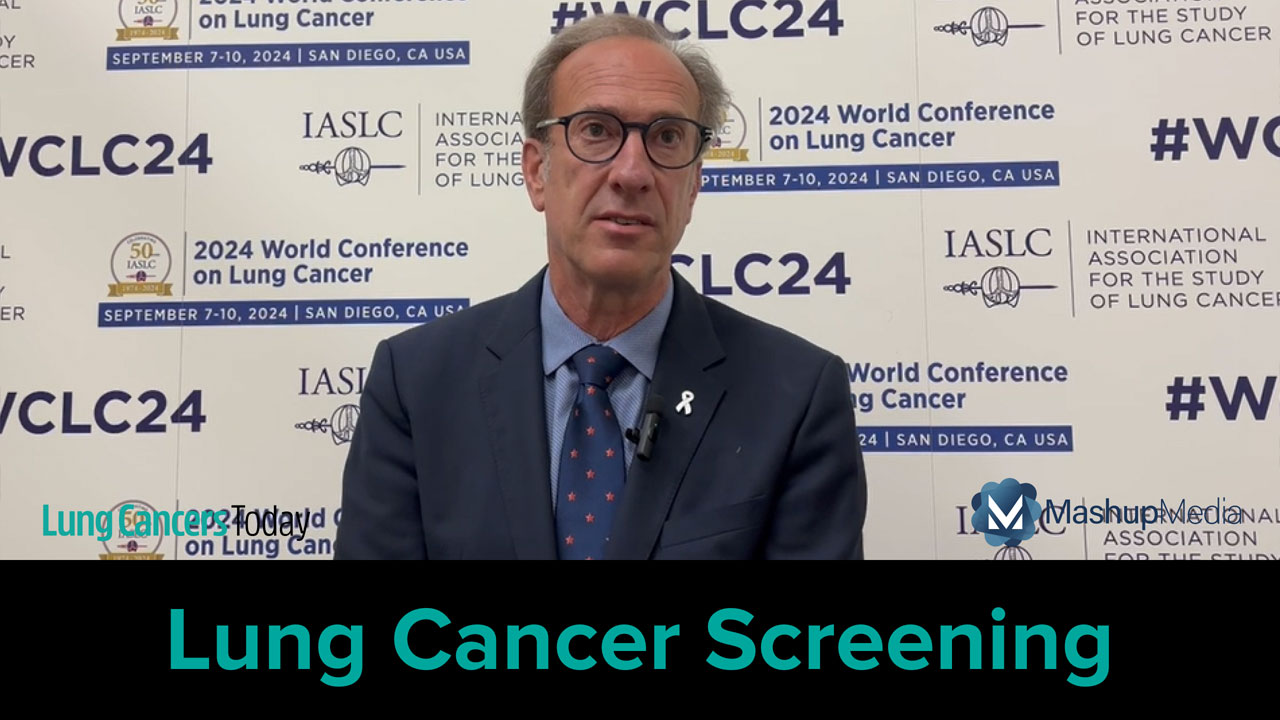
An updated safety analysis from the PHAROS study showed that encorafenib plus binimetinib has a safety profile that “remained manageable and generally consistent with that seen in the earlier analysis” of the combination treatment for patients who have metastatic non-small cell lung cancer (NSCLC) with the BRAF V600E mutation.
Gregory J. Riely, MD, PhD, presented the updated analysis with an additional 10 months of follow-up at the IASLC 2024 World Conference on Lung Cancer in San Diego, California.
It was important to conduct the updated analysis because the combination of the BRAF inhibitor encorafenib and the MEK inhibitor binimetinib showed a “meaningful clinical benefit and a manageable safety profile,” in the phase 2 PHAROS study.
The PHAROS study is an ongoing study evaluating encorafenib 450 mg once daily plus binimetinib 45 mg twice daily in patients who have metastatic non-small cell lung cancer (NSCLC) with the BRAF V600E mutation. The study included patients who were treatment-naïve (n=59) or had received one prior therapy for metastatic disease (n=39).
In the updated safety analysis, the trial investigators evaluated the treatment-related adverse (TRAE) profile by treatment line. They also investigated the “time to onset of specific clusters of TRAEs, which were selected based on prior clinical trial experience,” Dr. Riely and colleagues explained.
At the time of the updated analysis, 32% of patients with treatment-naïve disease continued to receive the combination treatment, with a median treatment duration of 16.3 months. Among patients who had received previous treatment, 10% continued to receive encorafenib plus binimetinib, with a median treatment duration of 5.5 months. Of patients who were treatment-naïve, 41% received >2 years of treatment, compared with 10% of those who had received previous treatment.
The most common TRAEs, occurring in >30% of patients in either arm, were nausea, diarrhea, fatigue, and vomiting. Nausea occurred in 59% of those who were treatment-naïve, compared to 41% of those who had received previous treatment; diarrhea occurred in 41% and 49%, respectively; fatigue in 31% and 33%, respectively; and vomiting occurred in 31% and 28%, respectively.
All treatment-related pyrexia events were grade 1 (10%) or 2 (2%) in patients who were treatment-naïve. Among patients who received previous treatment, all treatment-related pyrexia events were grade 1 (3%).
The researchers also broke down safety results among patients who received previous treatment with immunotherapy (n=24) and without immunotherapy (n=15). Among these patients, the most common TRAEs, occurring in >30% of patients in either arm, were diarrhea, fatigue, nausea, and vomiting. Diarrhea occurred in 50% of patients who had received prior immunotherapy and in 47% of those who did not; fatigue occurred in 50% and 7%, respectively; nausea occurred in 6% and 33%, respectively, and vomiting occurred in 33% and 20%, respectively.
In the overall population, the most common specific TRAE clusters were retinopathy excluding retinal vein occlusion, occurring in 26% with a median time to onset of 0.1 months; rash, occurring in 24% with a median onset of 2 months; and liver function test abnormalities, occurring in 16%, with a median time to onset of 1.8 months.
Among the overall population, TRAEs led to encorafenib dose interruptions in 48%, encorafenib dose reductions in 31%, and encorafenib discontinuation in 18% of patients. TRAEs led to binimetinib dose interruptions in 54%, binimetinib dose reductions in 33%, and binimetinib discontinuation in 19% of patients.
“This updated safety analysis after 10 months of additional follow-up of encorafenib plus binimetinib in patients with BRAF V600E-mutant [metastatic] NSCLC showed similar TRAE profiles in treatment-naïve and previously treated patients,” Dr. Riely and colleagues concluded. “The safety profile remained manageable and generally consistent with that seen in the earlier analysis and that established for patients with BRAF V600E/K-mutant metastatic melanoma.”
Reference
Smit E, Ahn M-J, Dagogo-Jack I, et al. Updated safety analysis of encorafenib plus binimetinib in patients with BRAF V600e-Mutant metastatic NSCLC from PHAROS study. MA06.13. Presented at the IASLC World Conference on Lung Cancer; September 7-10, 2024; San Diego, California.







 © 2025 Mashup Media, LLC, a Formedics Property. All Rights Reserved.
© 2025 Mashup Media, LLC, a Formedics Property. All Rights Reserved.